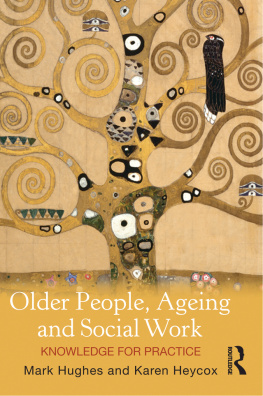Charles B. A. Musselwhite - Designing Public Space for an Ageing Population: Improving Pedestrian Mobility for Older People
Here you can read online Charles B. A. Musselwhite - Designing Public Space for an Ageing Population: Improving Pedestrian Mobility for Older People full text of the book (entire story) in english for free. Download pdf and epub, get meaning, cover and reviews about this ebook. year: 2021, publisher: Emerald Group Publishing, genre: Politics. Description of the work, (preface) as well as reviews are available. Best literature library LitArk.com created for fans of good reading and offers a wide selection of genres:
Romance novel
Science fiction
Adventure
Detective
Science
History
Home and family
Prose
Art
Politics
Computer
Non-fiction
Religion
Business
Children
Humor
Choose a favorite category and find really read worthwhile books. Enjoy immersion in the world of imagination, feel the emotions of the characters or learn something new for yourself, make an fascinating discovery.

- Book:Designing Public Space for an Ageing Population: Improving Pedestrian Mobility for Older People
- Author:
- Publisher:Emerald Group Publishing
- Genre:
- Year:2021
- Rating:3 / 5
- Favourites:Add to favourites
- Your mark:
Designing Public Space for an Ageing Population: Improving Pedestrian Mobility for Older People: summary, description and annotation
We offer to read an annotation, description, summary or preface (depends on what the author of the book "Designing Public Space for an Ageing Population: Improving Pedestrian Mobility for Older People" wrote himself). If you haven't found the necessary information about the book — write in the comments, we will try to find it.
Designing Public Space for an Ageing Population examines the barriers older people face by being a pedestrian in the built environment and demonstrates how to overcome them. Drawing on research carried out across the globe, and framed around Bourdieus theory of capitals, this book establishes how to overcome restrictions and barriers to mobility including:
- Infrastructure capital, such as technology, services, roads, pavements, finance and economics
- Social capital, for example friends, family, neighbourhood and community
- Cultural capital (norms, expectations, rules, laws)
- Individual capital (skills, abilities, resilience, adaptation and desire and willingness to change)
The book demonstrates that the public realm must be safe and accessible, but also attractive and desirable to an ageing population. The book includes case studies presenting solutions around CABEs objectives of urban design, notably: safe and accessible space including ease of movement; legible space, including adaptability, diversity and choice and; distinctive and aesthetically pleasing space, including character, continuity and quality.
Charles B. A. Musselwhite: author's other books
Who wrote Designing Public Space for an Ageing Population: Improving Pedestrian Mobility for Older People? Find out the surname, the name of the author of the book and a list of all author's works by series.







